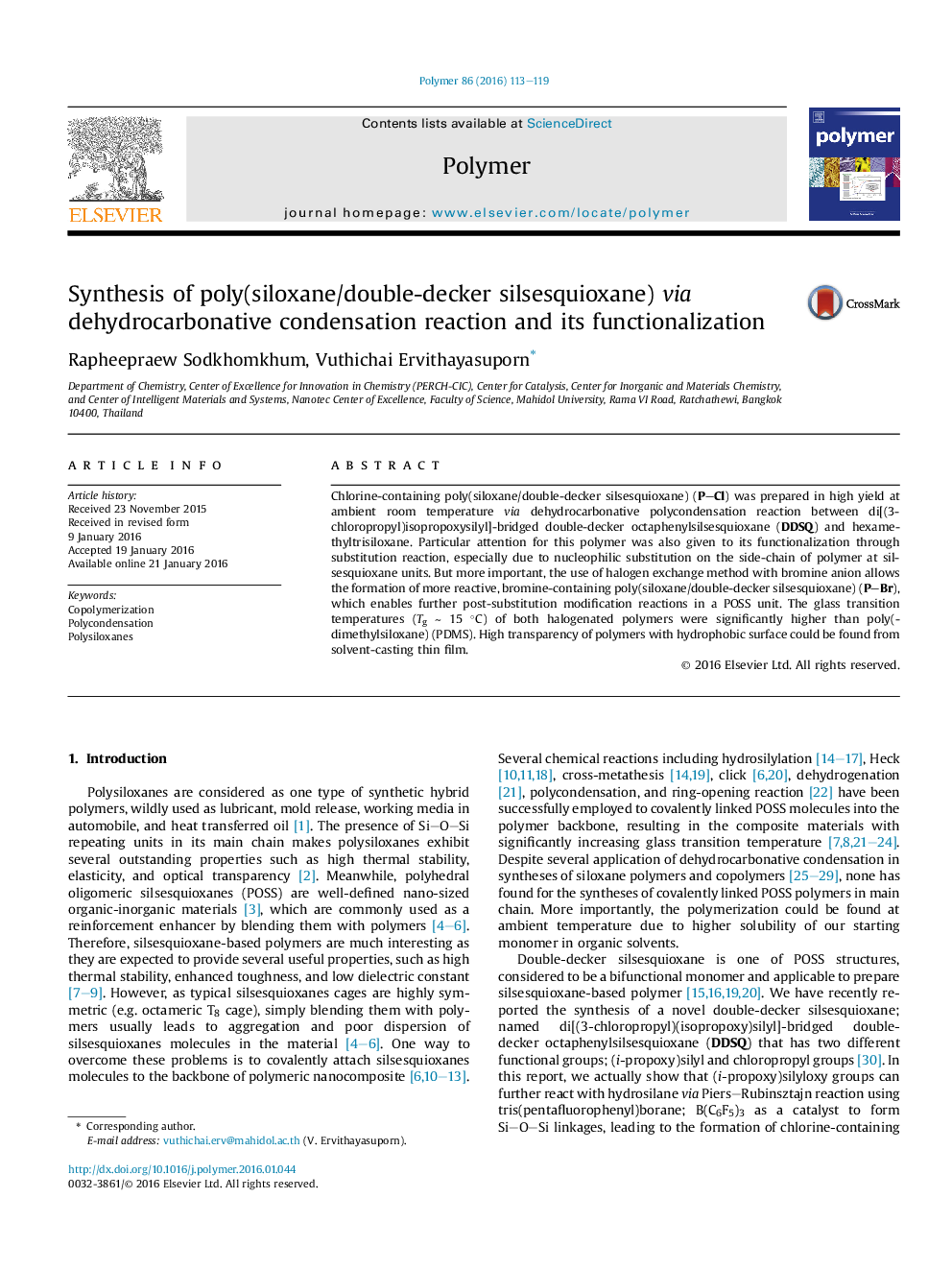| Article ID | Journal | Published Year | Pages | File Type |
|---|---|---|---|---|
| 5179693 | Polymer | 2016 | 7 Pages |
â¢Covalently linked POSS into the main chain of polysiloxane is prepared via dehydrocarbonative polycondensation reaction.â¢Substitution reaction on the side-chain of polymer enables tunable post-substitution modification reactions.â¢Highly optical transparency, hydrophobicity, thermal stability and Tg of polymeric films are obtained.
Chlorine-containing poly(siloxane/double-decker silsesquioxane) (P-Cl) was prepared in high yield at ambient room temperature via dehydrocarbonative polycondensation reaction between di[(3-chloropropyl)isopropoxysilyl]-bridged double-decker octaphenylsilsesquioxane (DDSQ) and hexamethyltrisiloxane. Particular attention for this polymer was also given to its functionalization through substitution reaction, especially due to nucleophilic substitution on the side-chain of polymer at silsesquioxane units. But more important, the use of halogen exchange method with bromine anion allows the formation of more reactive, bromine-containing poly(siloxane/double-decker silsesquioxane) (P-Br), which enables further post-substitution modification reactions in a POSS unit. The glass transition temperatures (Tg â¼Â 15 °C) of both halogenated polymers were significantly higher than poly(dimethylsiloxane) (PDMS). High transparency of polymers with hydrophobic surface could be found from solvent-casting thin film.
Graphical abstractDownload high-res image (238KB)Download full-size image
